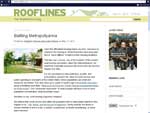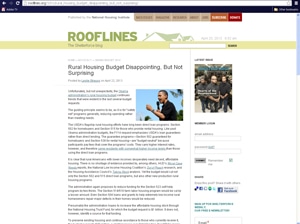HAC would like to share the following announcement from USDA Rural Development about its community facilities. For more information, consult the link below for RD State Offices:
https://www.rurdev.usda.gov/recd_map.html
A RESOURCE FOR PROGRAMS SERVING RURAL VETERANS
USDA Rural Development’s Community Facilities (CF) Program provides financing through direct and guaranteed loans and grants to units of local government, nonprofit organizations and Federally-recognized Indian Tribes for the development of essential community facilities is rural areas. These loans and grants may be used to support the construction, purchase, development or renovation of essential community facilities for public use in rural communities with populations of 20,000 or less.
These facilities include schools, libraries, adult and child care centers, homeless shelters, hospitals, medical clinics, assisted living facilities, fire and rescue stations, police stations, community centers, public buildings and transportation. All facilities funded with CF funding must be open to the entire community and cannot be limited to a particular group, such as veterans. So, as long as the services, which are described below, are provided to meet rural needs, including veterans, the funding can be made available.
Specifically, CF can provide funding for critical facilities and services to support homeless veterans (and others). For example, CF funding can be used to support local and regional food system projects, such as the construction of a food bank. This funding can also be used to renovate, purchase and install equipment to maintain a kitchen to prepare food and food services and to purchase vehicles for food delivery. Additionally, funding can be used to purchase a commercial van to deliver food to disabled veterans or to pick up veterans and other rural citizens and deliver them to a center where food is provided to them. The funding can also be used to construct a wheelchair ramp access for existing food banks which provide service to veterans and other rural citizens. CF funding can be used to develop or improve a rural community health center to improve access to critical health care services for veterans (and others).
For more information, consult RD State Offices.

 Stephen B. Fitzgerald, Senior Vice President of the Bank of America Charitable Foundation, presents a check to Moises Loza for support of HAC’s work in affordable rural housing. A key and very generous supporter of HAC for a number of years, Bank of America is also a major investor in HAC’s Rural Housing Loan Fund.
Stephen B. Fitzgerald, Senior Vice President of the Bank of America Charitable Foundation, presents a check to Moises Loza for support of HAC’s work in affordable rural housing. A key and very generous supporter of HAC for a number of years, Bank of America is also a major investor in HAC’s Rural Housing Loan Fund.


 Unfortunately, but not unexpectedly, the
Unfortunately, but not unexpectedly, the